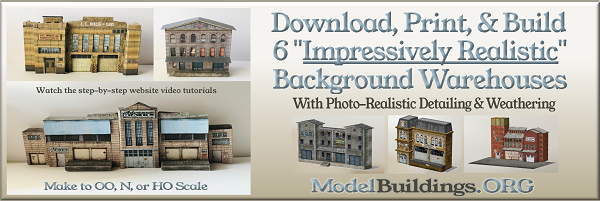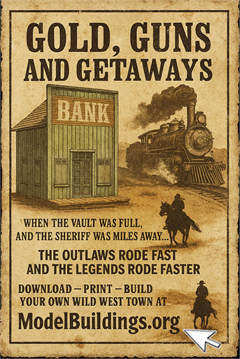Everything on model trains, model railroads, model railways, locomotives, model train layouts, scenery, wiring, DCC and more. Enjoy the world's best hobby... model railroading!
Building a New York City Elevated Subway Section
Steve asks readers:
“I am trying to build an N scale New York city elevated subway section and I have only found the viaduct sections in HO scale from Micro Engineering. It seems no one makes any in N scale. Does anyone have an idea how I can either make my own or where I can buy what I need ? This is holding up my layout.”
One Response to Building a New York City Elevated Subway Section
Leave a Reply















Yep Not a Problem, Go Get some I Beam stock or get Beam bridge kits and kitbash the overhead elevated. Use stock that would relate to the size and weight capability you would see on the real ones. Use I beam vertical posts and cross supports set the track beams so the beams run under each rail of your tracks. Use a flex track for less connections or glue on wood ties and to the beam and lay your own rail by Goo Gluing the single rail to the ties and gauging the rails apart using an NMRA gauge or track gauges from KADEE. Make sure you power from both ends of the overhead tracks so you don’t have to connect power to too many places on the overhead track area. Make sure you put in concrete abutments going from the beams to ground laid areas as you go. It’s not hard but take your time. Your vertical beams should go into concrete footers. Most beams you should be able to get plastic beams without a lot of expense and metal somewhat more. But if you are going to climb all over it then metal I suppose. (Hope your not climbing on them HA) Your two beams under each track should get cross beams or X braces to ensure they set equally down the track. (Make sure that your rails will parallel the beams below them as much as possible) You will see this in most truss bridge construction and models. Locking any other track beams for more tracks to that one will ensure they don’t shift. Go on to Google Earth to those elevated track areas like Chicago or New York and go to street view and look around. You should be able to get a good look and the beam structures looking under neath from street view. You fine what you like print the view s you want and use them to help pattern your own bridge frame for your elevated. Besides, doing it yourself you can make everything look more real and not a plastic atlas model (no Offense to Atlas Models ) but doing it yourself you can do a pretty darn good job if you just try. You may have to shop a bit to find the beams or posts you want but it is worth it. Using the right glues you will have a very good model. I at this moment am building my own switches and I now have 5 done and in good operation. Not counting my time I am building them for at least 1/4th of what it costs to by a ready to go switch at the hobby shop and they are going to be very reliable too. So don’t be afraid to build it from scratch. You may remove your first few beams in trial and error but it will be worth it. My switches they said I would ruin the first 6 switches that I would build, but only the first one did not work well. (and it can easily be fixed when I get some time now that I know what I am doing.) Currently, I am constructing 2 double curve switches as a cross over from one track to the other. I expect these will be fully functional when I am done. So go for it. from Newman